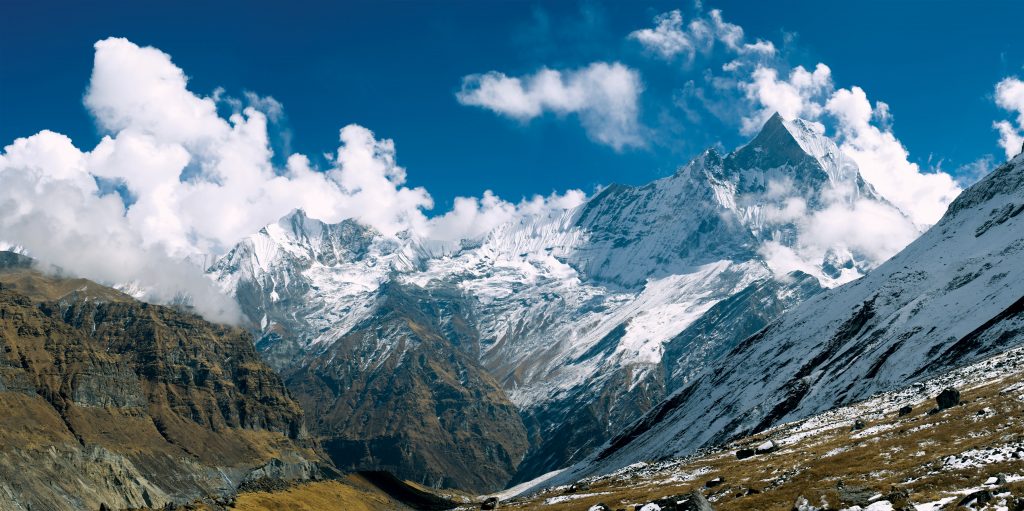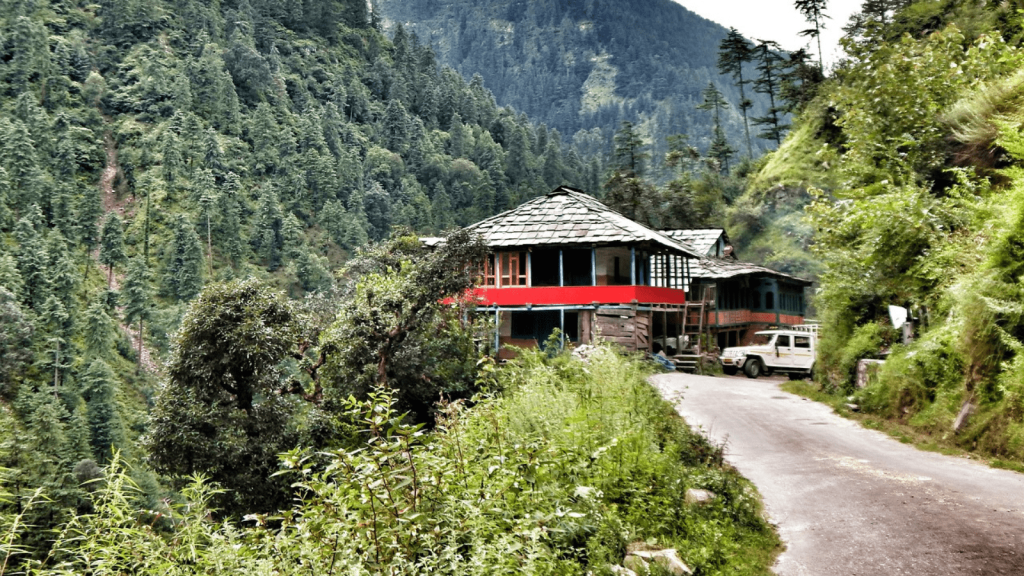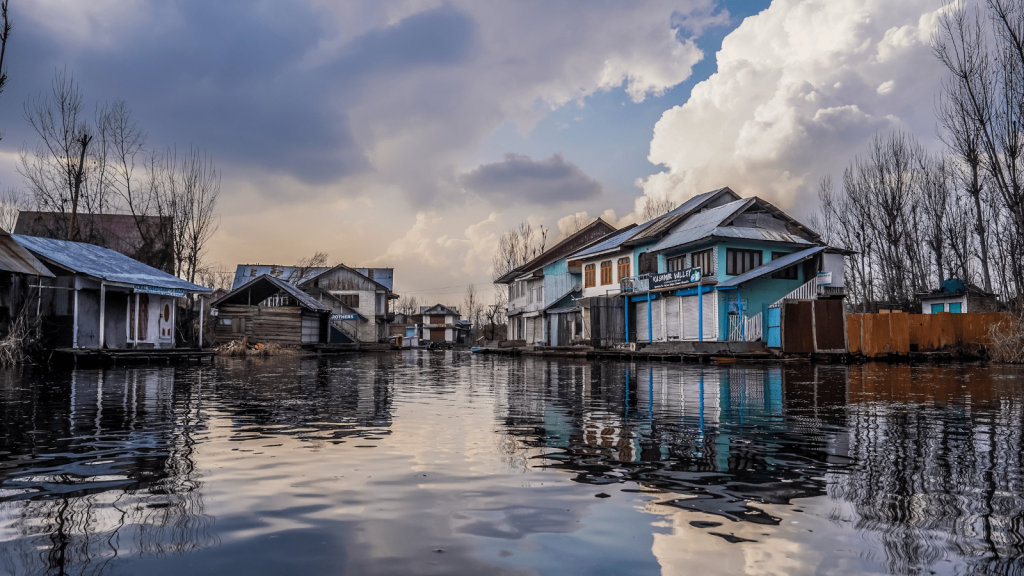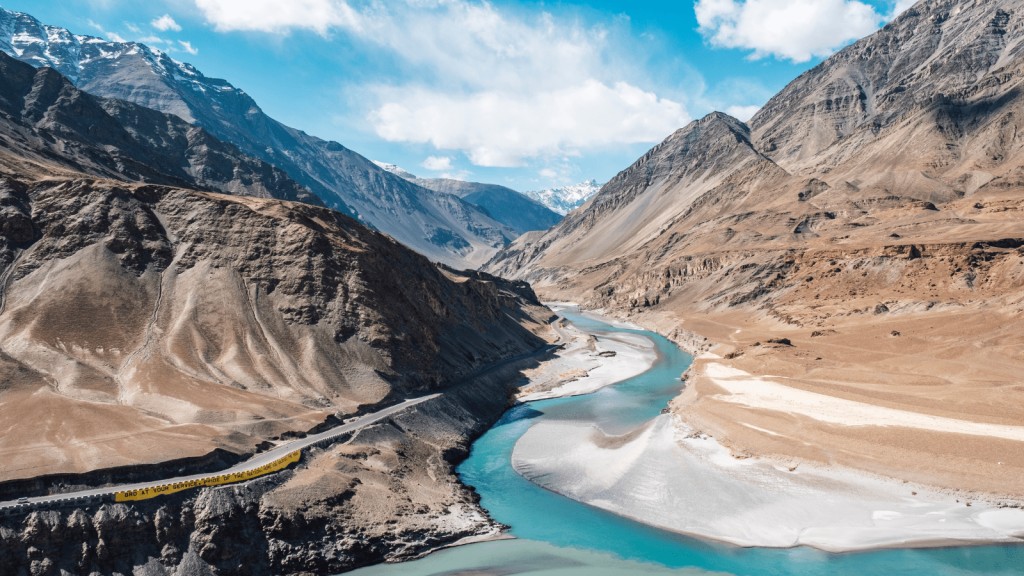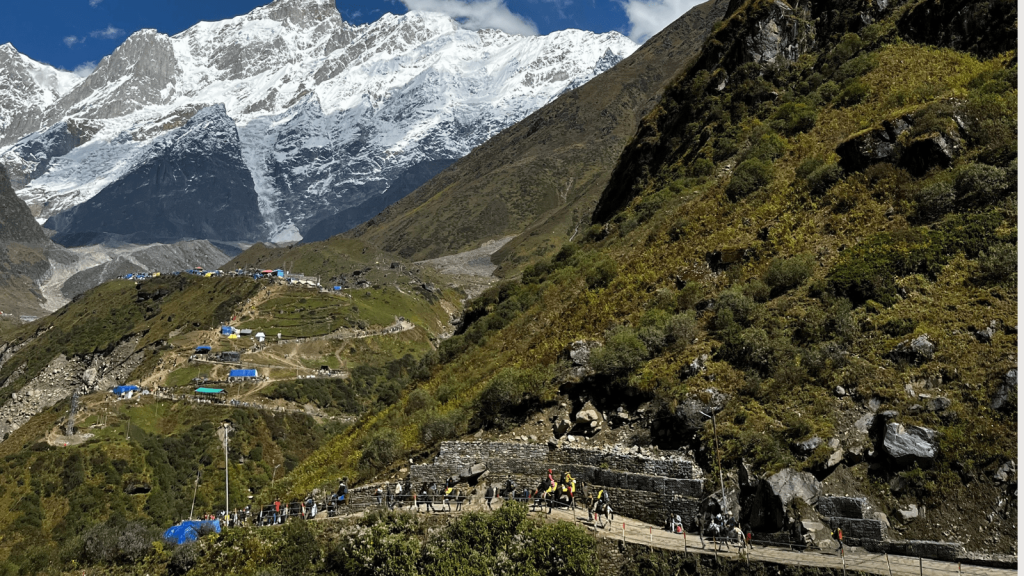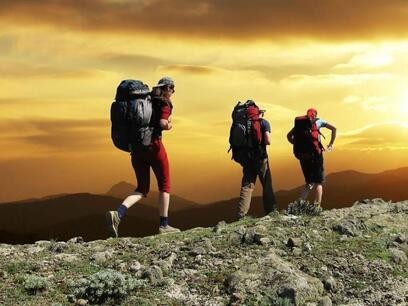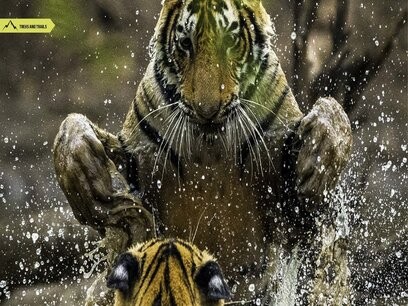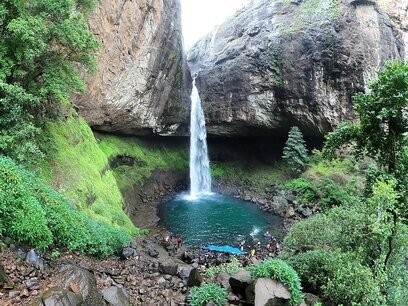Nepal has the reputation of being one of the top places in the world for adventure travel. It is a unique nation where you can do mountain climbing in the Himalayas and trek through beautiful landscapes with mountains in the distance. Thanks to the variety of altitudes the nation offers, you may raft down a river and embark on a jungle safari in some of the densest woods in this region of the globe. Nepal is the best adventure destination in the world.
Even an adrenaline addict can admit that Nepal has thrilling extreme sports. Numerous additional options besides hiking, mountaineering, and rafting have lately been investigated, including paragliding, bungee jumping, rock climbing, and mountain flying. You are invited to take part in this adventure in Nepal. The adventure sports and activities listed below are available in Nepal.
Adventure Sports in Nepal
Marathon in Annapurna
Starting at Annapurna Base Camp (4,395 m), the 42.19-kilometre race honouring Annapurna I concludes at the community of Dhampus (1,650 m). The marathon was established in June 2011 to commemorate the French expedition headed by renowned climber Mr. Maurice Herzog's first successful ascent of Mt. Annapurna, an 8,000-meter peak, on June 3, 1950. It takes place on the same day every two years.
Canyoning in Nepal
In the sport of canyoning, you descend canyons using various methods, including swimming, walking, scrambling, climbing, and abseiling. It is a sport that will take you entirely off the usual path, but it demands a high degree of physical condition.
Nepal Elephant Polo.
The World Elephant Polo Association holds its annual competition in December at the Meghauli airstrip in South Central Nepal, close to Chitwan. The game was originally played in 1982, and since then, it has been held yearly. The competition has teams from around the globe, including Scotland, Thailand, England, and Hong Kong.
Horse polo is comparable to elephant polo. Using a standard-size polo ball, each team of four players competes on a field that is 140 by 70 metres in size. A 15-minute break throughout the game separates two 10-minute playing periods. The World Elephant Polo Association, which enforces stringent regulations regulating the care and playability of elephants, is the organization that oversees the playing of elephant polo in Nepal and Theard.
Nepal Everest Marathon
The Everest marathon begins in Everest Base Camp at 5,356 metres and travels over 42 kilometres across the arid Himalayas before finishing at the Sherpa settlement of Namche Bazaar (3,446 m).
The race is organised each year on May 29 to commemorate Sir Edmund Hillary and Tenzing Norgay's historic first climb of Everest on that day in 1953. The marathon follows the ancient path to Mount Everest, passing via monasteries, landmarks, chortens, suspension bridges, and breathtaking scenery.
Nepal's Everest Sky Dive
One of the most unusual experiences in the world is the Everest jump, which is becoming known as an extreme kind of airborne adventure. Skydiving is done in Gorak Shep, on the Kala Patthar plateau, where there is the highest drop zone in the world.
Both the skydive and the freefall occur in front of Mount Everest (8,848 m) and some of the planet's highest mountain peaks. It offers a unique perspective of the Himalayas from above and below. Experienced pilots fly the aircraft with skydiving credentials; therefore, safety is assured. Skydiving may be done alone or with a partner.
Horseback Riding in Nepal
There are still no roads connecting Nepal's remote regions. You may therefore ride a horse or walk to get to these locations. In the trans-Himalayan area, which is located behind high mountains or on the southern edge of the Tibetan plateau, horses are a common mode of transportation.
Anywhere in the nation is a good place to go horseback riding. It may be planned for a short trip or a lengthy one to meet one's needs. Pony treks may be organised to Jomsom-Muktinath, Panauti-Nagarkot, Pokhara-Sarangkot, and Pokhara-Jomsom-Marpha.
Jungle Safari in Nepal
The uncommon one-horned rhinoceros, the elusive Royal Bengal tiger, the snow leopard, the red panda, and musk deer are just a few of the animals that call Nepal's forests home.
Some of the greatest animal habitats in this region of the globe are preserved in the tropical forests of Nepal's Terai. On the backs of elephants or in jeeps, visitors may take jungle safaris in the Terai's Chitwan National Park, Bardia National Park, Para Wildlife Reserve, and Shuklaphanta Wildlife Reserve.
Dugout canoe rides, nature or jungle hikes, visits to surrounding communities, and an evening cultural performance by the locals are all included in jungle safaris in national parks. In and around the regions, the national parks provide a wide variety of visitor amenities.
Mountain biking in Nepal
Because of its varied terrain, Nepal is one of the best places for mountain biking. Get away from the hustle and bustle of the city and explore the countryside's villages and small towns.A bicycle tour is a great way to get to know the people and experience the tranquil surroundings.
Depending on your fitness level, you may go for a relaxing day excursion or go for a longer period to far-off places like the Kanchanjangha and Annapurna regions. If you have the time, you could even use a mountain bike to travel the full length and width of the nation.
Paragliding in Nepal
The easiest, safest, and most affordable way to experience the thrill of solo flight is via paragliding, a relatively new adventure activity in Nepal. You will get the chance to witness the majestic Himalayas' aerial vistas as you fly above lakes, towns, monasteries, temples, and forests with eagles and gryphons.
Paragliders take off from Sarangkot, located in Pokhara Valley at an elevation of 1,592 metres above Lakeside. Dhaulagiri, Annapurna, and Manaslu are three of the world's Eight Thousand that may be seen in breathtaking detail from this location.
Nepal Bird Watching
Despite its size, Nepal is home to over 850 bird species, or nearly 10% of all bird species worldwide. Nepal is home to both migratory and permanent bird species. The curlew, greenshank, ruff, coot, and brahmini duck are migratory species that visit this area in the winter. At the same time, the red-winged cuckoo, pied-crested cuckoo, paradise flycatcher, and pied ground thrush are significant summer visitors. Since it hasn't been discovered outside of Nepal, the spiny babbler is a species that only exists there.
Specialized bird-watching trips are available at several national parks and wildlife reserves as the hobby grows in popularity.
The marsh of the Koshi Tappu in the east has made it Asia's best bird-watching spot, and there are more than 450 kinds of birds in the Chitwan National Park. For more unusual bird-watching opportunities, visit Lumbini in the centre of Nepal, the Mai Valley and Tamur Valley in the east, the Dang Valley, and Ghodagodhi Lake in the west.
Bungee Jumping in Nepal
It is now possible to experience the ultimate rush of a bungee jump in Nepal, 12 kilometres from the Nepal-Tibet border and three hours by bus from Kathmandu. The bungee jump was created by one of the top bungee consultants in New Zealand, and it is run by some of the most skilled jump masters in the industry.
The leap takes place from a 166 m wide steel suspension bridge that spans the roaring Bhoti Kosi River to connect two sides of a steep valley. The area features a beautiful landscape, with tall cliffs covered in deep woods. You may camp here and do rafting and rock climbing as well.
Nepal mountaineering
Nepal was initially made accessible to the outside world via climbing. Eight of the ten tallest peaks in the world, above 8,000 metres, including Mount Everest, dominate Nepal's northern region.
Unsurprisingly, the appeal of climbing these strenuous summits continues to attract large numbers of foreign tourists year after year.
All four climbing seasons—Spring (March-May), Summer (June–August), Autumn (September–November), and Winter—are available for mountain climbing (December-February).
The Nepal Mountaineering Association gives licences for the lower hiking peaks between 5,587 m and 6,654 m, while the Ministry of Tourism issues permits for the larger summits.
Alpine Flight
For people who can't go hiking to view the mountains up close, mountain flights provide an opulent alternative to a Himalayan experience. On the hour-long mountain flight from Kathmandu, one may go up close to the tallest peaks, including Mt. Everest.
While in flight, one can see and recognise the peaks and glaciers. Gosaithan (known as Shisha Pangma), Dorje Lhakpa, Phurbi Chyachu, Choba Bhamare, Gaurishanker, Melungtse, Chugimago, Numbur, Karyolung, Cho-Oyu, Gyachungkang, Pumori, and Nuptse may all be seen during the trip, in addition to Everest, of course. Many airlines provide early flights to the mountains from Kathmandu's domestic airport.
While flights from Pokhara provide a birds-eye perspective of the Western Himalayas, flights from Kathmandu show the Eastern Himalayas.
The Nepal Trek
It should be obvious how popular trekking is in the Himalayan nation, given that one in four tourists there engages in it. Most hikes pass across 1,000 to 4,000 metres. However, some well-travelled sections go over 5,000 metres. The trekkers are captivated by the breathtaking scenery along the journey and the people from the many ethnic groups they come across, giving them a unique chance to see Nepal's wide cultural variety. And what better way to experience it and share it than by walking?
The Everest, Annapurna, and Langtang areas have historically been the most well-traveled hiking routes. However, the remote eastern region of Kanchanjangha and the northwest region of Dolpo are increasingly becoming more well-known as tourist attractions. In recent years, the government has created several historical trails around the nation where you may hike while getting a glimpse into the local communities' customs. The Great Himalayan Trail, a 1700 km trip that takes months to complete, is available for those with the time and the energy. It runs from Kanchanjangha in the east to Humla in the west.
Low-Cost Aircraft
From Pokhara, ultralight aircraft take off and give breathtaking views of the lakes, mountains, and villages. This is the best method to see things differently in life. Flights are run practically all year round, except during the monsoon season from June to August.
Providing it doesn't rain, flights operate daily from dawn to 11 a.m. and from 3 p.m. to sunset. One passes over Pokhara city, Phewa Lake, Sarangkot hill, and Machhapuchhre peak during the 30-minute trip.
Another option is to spend an hour ascending to 12,000 feet or higher and explore the Annapurna range. Pokhara is conveniently located between Kathmandu, Chitwan, and other large cities.
Information Management System for Trekkers (TIMS)
Since April 1, 2010, the Nepal Tourism Board (NTB) and Trekking Agencies Association of Nepal (TAAN) have made it necessary for trekkers to register for the Trekkers' Information Management System (TIMS) Card to control illegal trekking operations and ensure the safety and security of trekkers in the general trekking areas.
In Kathmandu and Pokhara, TIMS cards are offered through the NTB, TAAN, and officially recognized trekking outfitters.
According to the new regulations, free independent trekkers (FIT) must pay US$ 20 per trekking route per person per entrance, and all tourists who go trekking via a trekking business must pay US$ 10. These sums are to be paid in equal Nepalese rupees. A portion of the funds will be used to keep the trekkers' database current and to rescue hikers who need emergency assistance.
The money will also be used to upgrade the infrastructure and maintain and protect the current walking paths.

